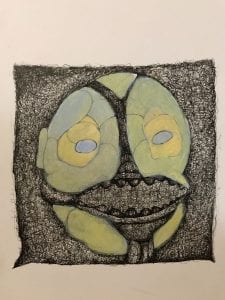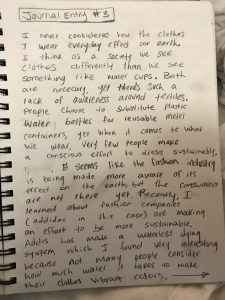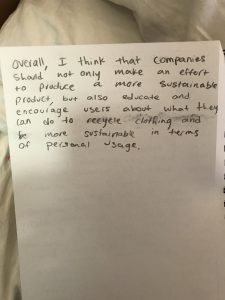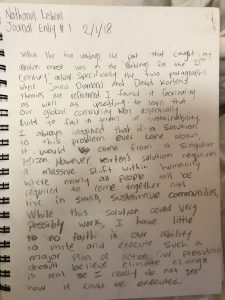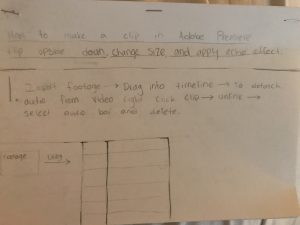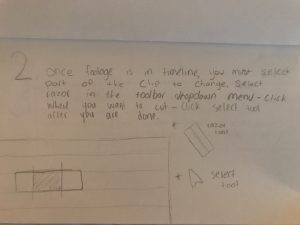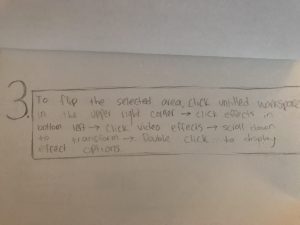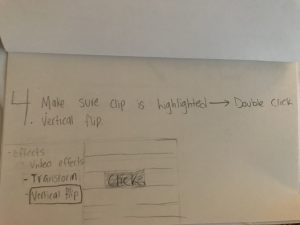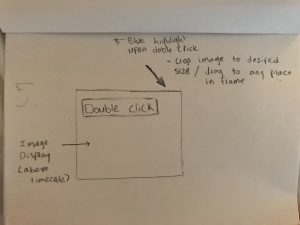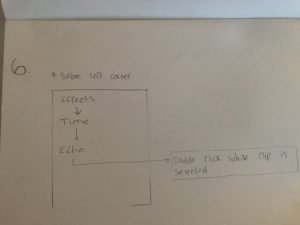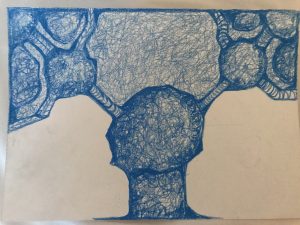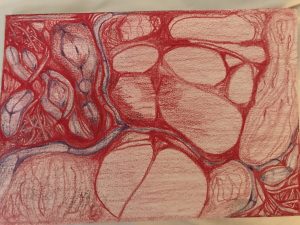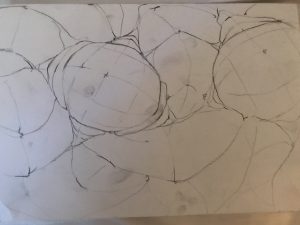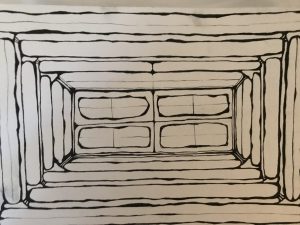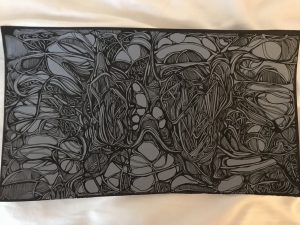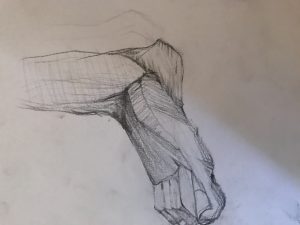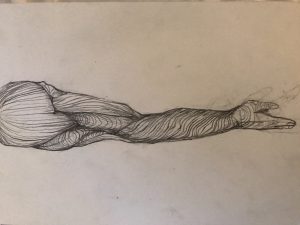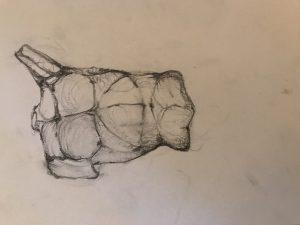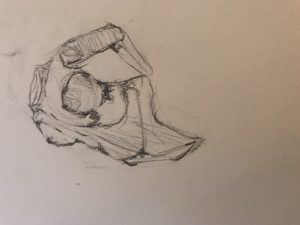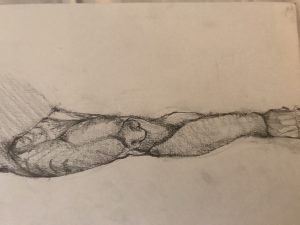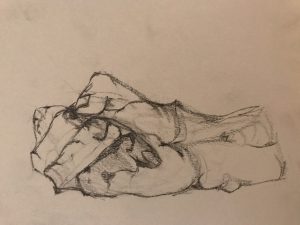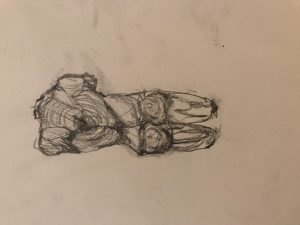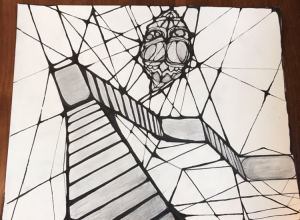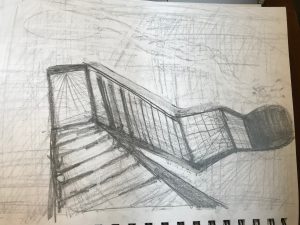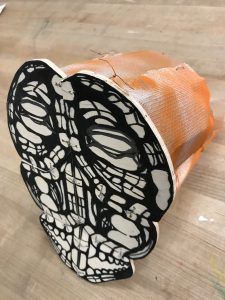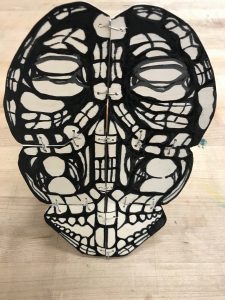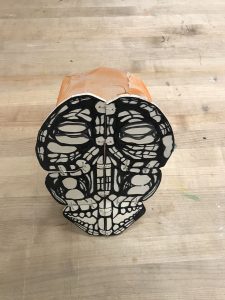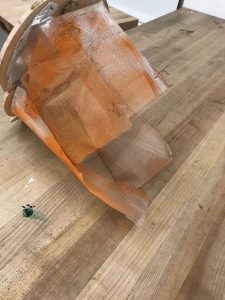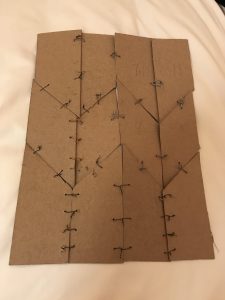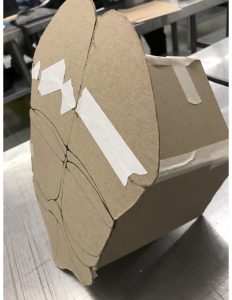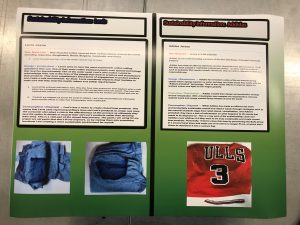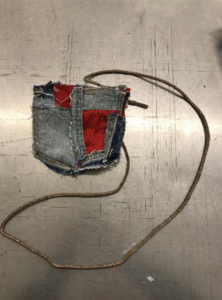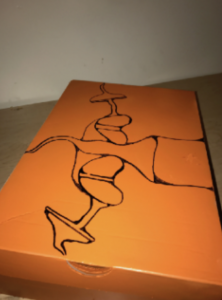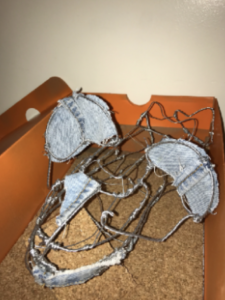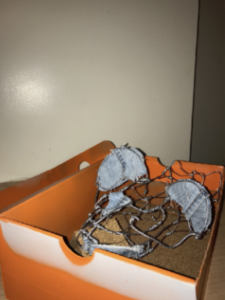Title: An Infant bound by Its Surroundings
This drawing was made using black ink and oil pastels. It explores the mirror stage, where young children become aware of their own physical presence. But more specifically it explores Lacan’s ideas about recognizing the self, as well as the differentiation between recognizing one’s image in the mirror, and understanding that what they see is merely a reflection of themselves, not something that is real. As this key understanding occurs within the child, they also become increasingly aware of their surroundings, which is where their sense of self is often obscured or altered to fit the norms already set by society. Lacan claims that parents impose onto the child what is bad or shameful, so the child suppresses these feelings, and thus the unconscious is formed. In my piece the child is bound to the environment it was born into, with the actual pattern that surrounds the infants head creating a grotesque mouth. One that is foreign and does not belong to the child. Ultimately I aim to make people question what comes out of their mouth, where it came from and how their subconscious biases might be affecting what they say.

